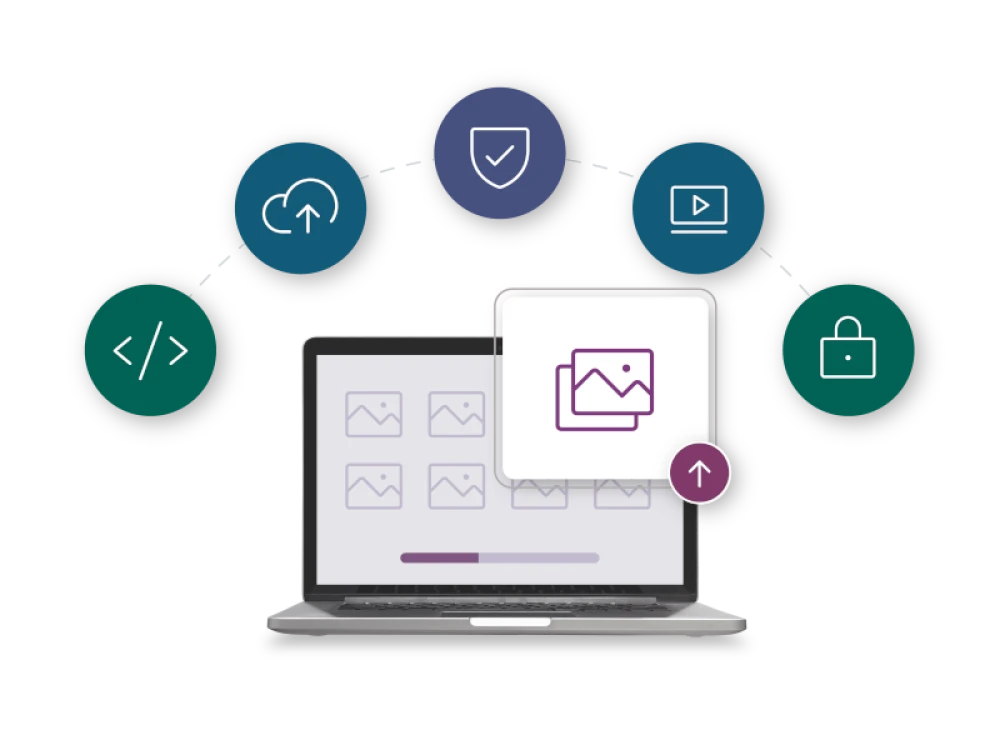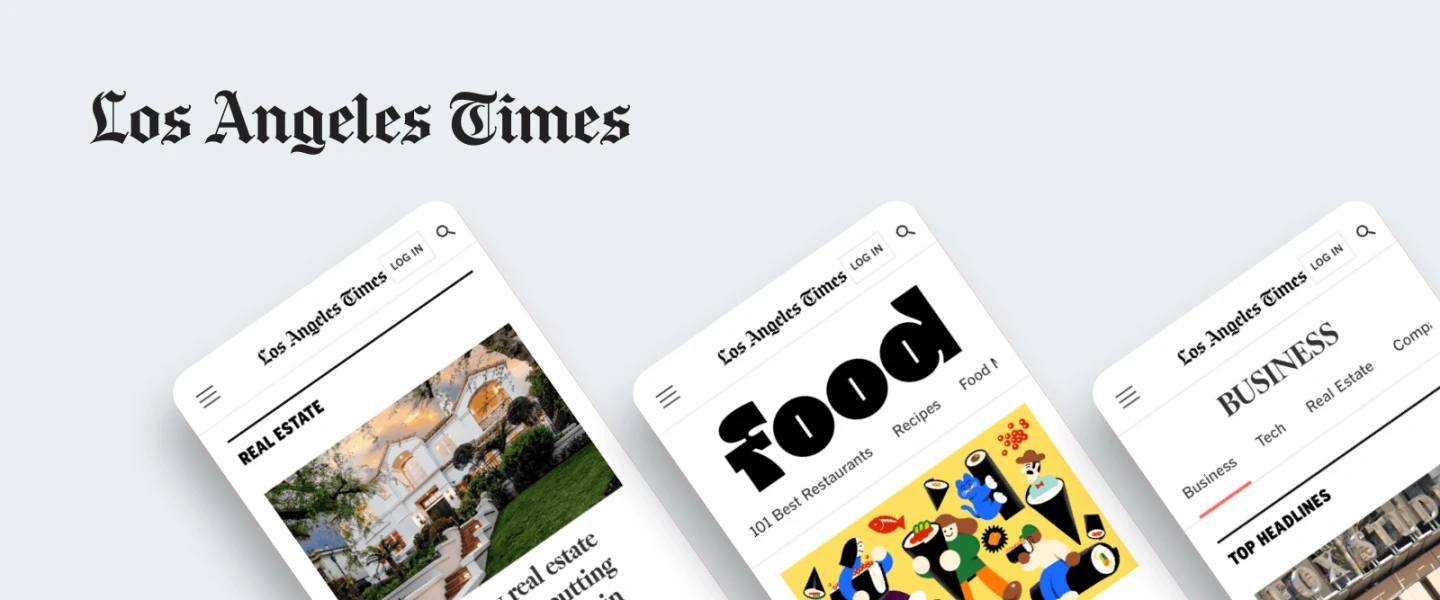Digital asset management guide
Successful content businesses are those that reinforce a strong foundation to their content processes and workflows—and digital asset management is one key part of this. By bringing order to the creative process, prioritizing consistency and supporting collaboration among teams, putting a strong digital asset management solution in place now will ensure digital and editorial teams can focus on the future, and be ready for what’s next.
Brightspot’s DAM solution makes finding assets easy and intuitive. Advanced capabilities like word proximity, diacritical-marks search and exact-phrase search make locating assets seamless for the user, while AI also drives intelligent image and video analysis to identify objects, people, text and activities.
Federated search is an especially powerful tool that comes with the Brightspot platform, and allows you to query a third-party database, like Getty Images, directly from our solution, saving time and making finding assets easier. Assets can be imported as a Brightspot content type, then edited, all without having to leave the CMS or rely heavily on IT support. One of the other possibilities through federated search via Brightspot is the ability to connect to another — often homegrown — DAM or storage location for assets.
As stewards of content, we have a responsibility to reinforce a strong foundation for content management processes. After all, it’s no longer just the designer in the value chain: there’s a vibrant community that contributes to the assets, whether it’s production or review and securing the asset, so we need to prioritize consistency and support collaboration amongst our teams.

This single digital asset management system, with 80 terabytes of high-quality materials and a real-time connection to the company’s authoring suite, has powered the company’s coverage and allowed it to flow more seamlessly. newsroom transformation in less than 12 months.
A digital asset management (DAM) system is a solution that helps organizations and publishers manage and access all of their digital assets through tools like search, workflows and editing features—all in one place.
These days, every business is a content business. Whether you’re a media company, Fortune 500 organization or e-commerce brand, a successful business strategy starts with ensuring you have the right solutions and foundational systems in place to create consistency in your content output.
Today’s publishers and brands are focused on strengthening their business core. They understand that in order to succeed, a strong foundation is required to save both time and money. In fact, a recent McKinsey & Company survey of hundreds of executives across industries found 72% said their organizations were considering implementing changes to “core processes and how the company is run” following the impact of the COVID-19 pandemic.
When it comes to building any successful content business—one that supports the brand in delivering on successful customer experiences at scale—an important facet of ensuring you have a strong foundation is implementing a digital asset management (DAM) solution. By acting as a central repository to all of your most important digital assets, a DAM solution helps bring order to the creative process, create a consistent brand narrative and support stronger collaboration
For digital leaders—anyone from the chief digital officer and chief product officer to social-media specialists and project managers—the brand is their product. In setting out to establish a content business, these leaders need a system that effectively and proactively allows them to manage their brand narrative in a digital ecosystem. There are three key roadblocks to supporting that digital ecosystem that a DAM aims to help organizations and publishers overcome.
- Chaotic creative processes: Organizations and publishers today work with a variety of content types for everything they produce—including text, photos, audio and video—and these shifts are only expanding that list. A DAM solution aims to bring order to the creative process by increasing functionality for the digital and editorial teams working with these assets to produce content.
- Inconsistent output: With the heightened number of channels to which content is being delivered, and disparate teams working on different projects behind the scenes, organizations and publishers can get lost in trying to achieve a seamless, consistent experience for every user. A DAM solution aims to act as a business’s central repository of assets, making it easier to ensure a uniform approach to content is being produced across channels.
- Lack of collaboration: Unclear and undefined roles and permissions create bottlenecks in the content process. Digital asset management works to solve this by supporting organizations and publishers in strengthening information sharing and collaboration amongst digital and editorial teams at every stage of content creation—from planning and creation, to review, version control, approval and license management.
The key features of a digital asset management (DAM) system include robust metadata management for efficient categorization and search, seamless integration with other software, version control for tracking changes, centralized storage and organization, permission management for security and tools for asset transformation and distribution. These features streamline asset management processes, enhance collaboration and boost productivity within organizations.
DAM improves workflow and efficiency by centralizing asset storage, facilitating easy access and retrieval, reducing time spent searching for assets and enabling seamless collaboration among team members. Implementing a DAM system yields benefits such as improved organization, enhanced security, reduced duplication of efforts, streamlined workflows and increased productivity.
DAM systems can manage various types of digital assets, including but not limited to images, videos, audio files, documents, presentations, graphics, logos, design files, marketing materials, social media assets and creative content. These systems are versatile and adaptable to the diverse content needs of organizations across different industries.
The security of a DAM system depends on several factors, including the implementation of robust access controls, encryption of data, compliance with industry standards and regulations, regular security audits and proactive measures to prevent unauthorized access or data breaches. Additionally, features like permission management and user authentication contribute to enhancing the overall security posture of a DAM system. By prioritizing data protection and adhering to stringent security protocols, DAM systems strive to provide a secure environment for managing and storing digital assets.
Yes, DAM systems can support remote and distributed teams by providing seamless access to digital assets from anywhere with an internet connection. These systems offer centralized storage, allowing team members to securely access, collaborate on and share assets regardless of their location. With features like cloud-based storage, version control and collaboration tools, DAM systems facilitate efficient communication and workflow management for remote and distributed teams, ultimately enhancing productivity and collaboration.Leadership and culture play a crucial role in digital transformation. Strong leadership provides vision, direction and resources for transformation efforts. A culture that embraces change, innovation and continuous learning is essential for adapting to new technologies and processes effectively.










